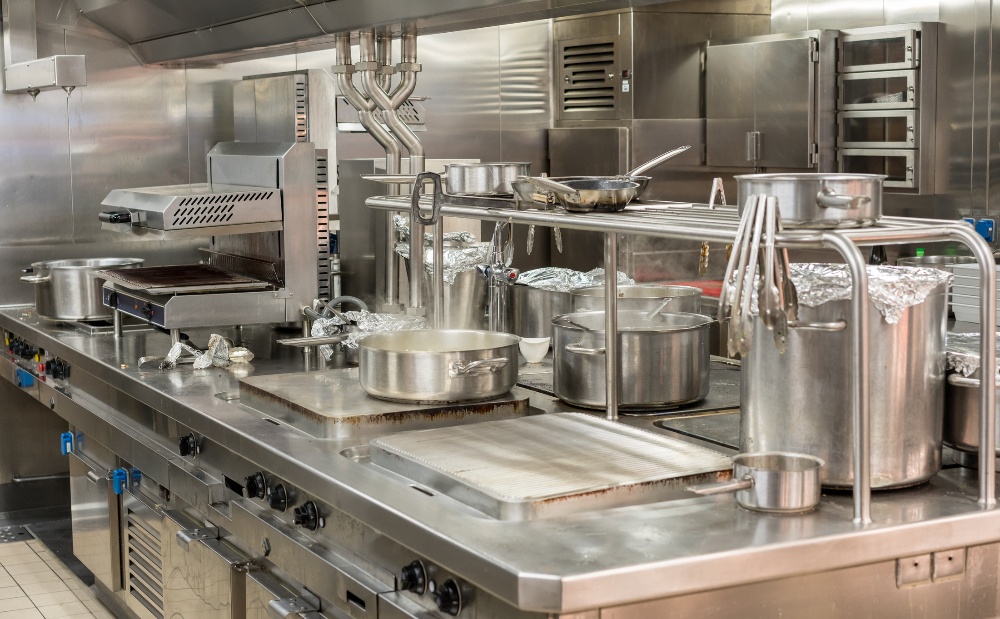
Supply chain issues are slamming into the commercial food equipment services industry, and it could be damaging your company’s long-term profit. As the supply chain delays jobs and disrupts your business, it’s not enough to just rise above the current mess. To grow your commercial food equipment service company in the future, you’ll also need to protect against the next wave of supply chain issues.
By taking a few critical steps now, you can reduce the problems growing out of the current supply chain and plow steadily ahead when the next supply chain crisis takes hold. Read on for four ways to mitigate supply chain issues in the commercial food equipment service industry.
How are supply chain issues affecting commercial food equipment service companies?
Chances are if you’re a commercial food equipment service company leader, supply chain issues have hit your organization hard. According to the North American Association of Food Equipment Manufacturers, 96 percent of foodservice equipment manufacturers are experiencing supply chain problems.
As your company is struck by equipment shortages, delays, and rising costs, you could be losing money. All told, recent reports now suggest companies are shedding an average of $184 million per year to supply chain issues.
How can you reduce supply chain issues and bolster your commercial foodservice equipment company?
There are ways for commercial food equipment service companies to revamp their parts management strategy and avoid supply chain disruptions. Here are four ways to reduce supply chain issues in the commercial food equipment service industry:
1. Monitor your parts inventory levels.
No matter how smoothly the supply chain is running, you need to balance your parts inventory levels in order to maximize revenue. If inventory runs low, you risk running out of parts and delaying jobs. If you’re overstocked, you risk sitting on aging parts or holding limited cash on hand. The recent supply chain issues magnify the biggest imbalances in your inventory management strategy.
That’s why, to avoid supply chain problems in the future and drive efficiency all around, you need to automate parts inventory tracking. Advanced field service software solutions track your stock keeping units (SKUs) for you. That means you receive reports that show you what parts are in high demand, what parts aren’t selling, and how frequently you need to restock. With those insights, you can gain more visibility into your inventory needs, and your company will be more prepared when supply chain issues pop up.
2. Replenish parts inventory on a proactive basis.
You may not have time to constantly eye the supply chain’s status and predict your parts stock levels. Instead, you can use automated replenishment software to refill your parts inventory for you—saving you time and helping you avoid shortages during supply chain issues. This technology monitors lead times for you and auto-orders parts to match your inventory levels. Ultimately, this type of automated replenishment can keep your company moving forward when the supply chain becomes less predictable.
3. Track all of your parts’ locations.
It’s often easy for commercial food equipment service leaders to access parts inventory within one warehouse while having limited visibility into another. For instance, you may have a clear understanding of parts levels at your physical warehouses, but go-boxes are more difficult to measure. However, the more visibility you have into all of your parts’ locations, the easier it is to avoid supply chain issues.
To keep from being caught off guard by supply chain disruptions, make sure your software solution shows you all of your inventory levels and needs, regardless of where parts are stored. That means your software should show you all of your parts levels within go-boxes, physical warehouses, and trucks.
4. Conduct frequent cycle counts.
Cycle counts are important because they help to protect against unexpected shortages, costly overstocking, or overlooking important parts inventory. However, conducting cycle counts can be time-consuming if you’re adding up inventory via multiple systems or manual counts. Worse yet, if your team is conducting cycle counts manually, it can lead to costly errors.
Ultimately, you can use software solutions to automate your cycle counts and conduct them more easily. For instance, with the Global Warehouse mobile app, you can manage your parts inventory and run cycle counts from your mobile device. By simplifying this critical process, you can stay ahead of supply chain issues and reduce work for your teams.
Master the supply chain and grow your company.
By embracing technology, you can overcome supply chain issues and avoid job disruptions. However, not all field service management solutions will deliver the same benefits to your organization. Davisware’s all-in-one field service solutions are built specifically to help commercial food equipment service companies conquer the industry’s biggest challenges, streamline processes, reach more customers, and grow. Schedule a demo now to see how advanced all-in-one software works.


